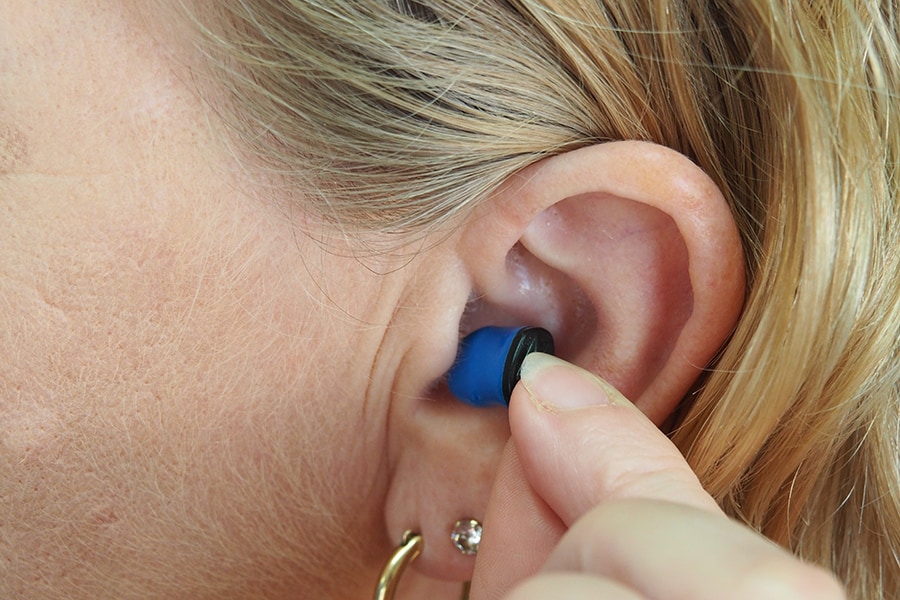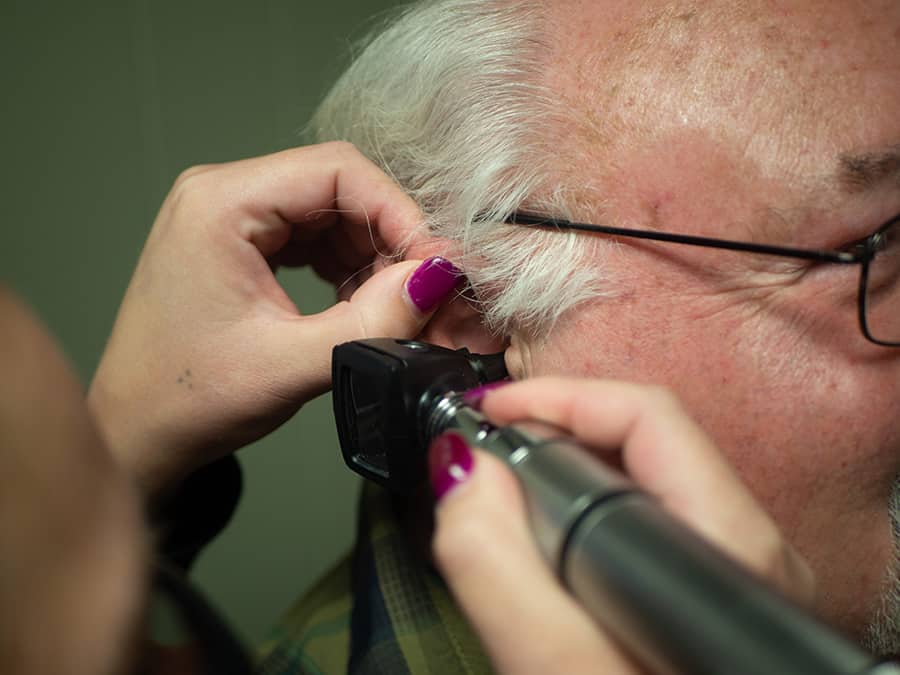EXCLUSIVE: Advocating for accessible hearing devices – A call to action

Adriana Aleksandrova, Content Writer and Consultant for Hear4U, discusses the need of hearing accessibility and the challenges faced by individuals with hearing loss in accessing hearing assistive devices. The article covers important topics like the prevalence of hearing impairments, barriers to accessibility, the role of technology and innovation, and promoting inclusivity.
In a world filled with bustling sounds and vibrant conversations, the gift of hearing allows us to connect, communicate, and experience the beauty of life to its fullest. However, for millions of individuals around the globe, this simple yet profound ability remains elusive due to hearing impairments.
Startlingly, a staggering 6.7 million people in the UK could significantly benefit from hearing aids to enhance their auditory experience, yet only a mere fraction, approximately two million individuals, actually utilise these life-changing devices. This stark disparity in access to hearing assistive technology highlights a pressing issue that demands collective attention and effort.
This article calls for action to bridge this gap and explores the profound impact of hearing assistive technology on the lives of individuals with hearing impairments. It aims to address the barriers hindering access to these transformative devices and delve into the role of technology and innovation in advancing hearing accessibility. Together, institutions and members of society can facilitate inclusivity and ensure the world of sound becomes available to all.
Understanding the need for accessible hearing assistive devices
In a world where communication is the cornerstone of human connection, hearing impairment presents a significant challenge that affects millions of individuals worldwide. More than 40 percent of people over 50 in the UK have hearing loss, with this rising to over 70 percent of people over 70. This prevalence underscores the urgency of addressing the need for accessible hearing assistive devices to enrich the auditory experiences of those affected.
Hearing impairments transcend mere difficulty in perceiving sounds; they present a myriad of challenges in daily life. Communication becomes strained, leading to misunderstandings and social seclusion. In educational settings, hearing loss can hinder academic progress and daily interactions. Employment opportunities may be limited due to lingering stigma or certain professions requiring optimal hearing capabilities; estimates suggest that the UK economy loses £25 billion per year in lost productivity and unemployment caused by hearing loss. Additionally, hearing loss can result in safety concerns, particularly in scenarios where auditory cues are essential.
The effects of untreated hearing loss extend beyond the physical aspects, taking a toll on mental and emotional well-being. Social isolation, frustration from communication difficulties, and feelings of helplessness can lead to increased stress and anxiety. Furthermore, untreated hearing loss has been linked to cognitive decline and an increased risk of dementia.
Access to hearing assistive devices is not just about sound amplification; it is about empowerment, inclusion, and enriching lives. Without these devices, individuals with hearing loss face barriers that hinder their social, academic, and professional growth, impacting their overall quality of life.
Types of hearing assistive devices and their impact
Hearing assistive devices offer a spectrum of solutions tailored to address various types and degrees of hearing impairments. These devices have a profound impact on the lives of individuals with hearing loss, enriching their auditory experiences and fostering greater participation in social interactions. Here are some of the most common types and their transformative effects:
1. Hearing aids: Restoring clarity and connection
Hearing aids are versatile devices available in different styles, discreetly amplifying sounds to compensate for hearing loss. By enhancing sound perception, they enable users to engage more actively in conversations, appreciate music, and navigate daily life with confidence. For many, hearing aids are a gateway to reconnecting with loved ones and the world around them, reducing feelings of isolation and promoting overall well-being. Hearing aids also offer various health benefits such as a reduced risk of dementia and cardiovascular disease, as well as improved mental health.
2. Cochlear implants: A revolution in sound perception
Cochlear implants are revolutionary devices for individuals with severe to profound hearing loss. By directly stimulating the auditory nerve, they provide access to sound signals for those who do not benefit from traditional hearing aids. Cochlear implants have transformed the lives of many, especially children born with hearing impairments, as they foster language development, speech comprehension, and academic success, empowering them to fully participate in society.
Indeed, according to data from the University Hospitals Bristol and Weston NHS Foundation Trust (UHBW), 87 percent of adult cochlear implant users who were implanted through the West of England Cochlear Implant Programme correctly identify more than 60 percent of recorded everyday sounds and 70 percent of them experience improved speech intelligibility.
3. Assistive listening devices (ALDs): Clear communication in any setting
ALDs are invaluable tools in challenging acoustic environments. They work alongside hearing aids or cochlear implants, reducing background noise and delivering sound signals directly to the user. ALDs ensure clear communication in classrooms, theatres, and public spaces, enhancing speech comprehension and reducing listening fatigue, ultimately enabling individuals to actively engage in diverse social settings.
4. Captioning and subtitling: Enabling access to audio content
Captioning and subtitling play a crucial role in making audiovisual content accessible. By providing text-based representations of spoken dialogue, these tools ensure that individuals with hearing impairments can fully comprehend television programmes, films, online videos, and live events.
The availability of captions and subtitles has a transformative impact, empowering individuals with hearing loss to lead fulfilling lives and participate in the world with greater confidence and inclusivity.

Barriers to accessibility
Despite the evident benefits of hearing assistive devices, various barriers hinder their accessibility, leaving many individuals with hearing impairments without the support they need. These barriers encompass financial constraints, limited awareness, and policy gaps, which collectively contribute to the exclusion of those seeking access to life-changing technologies.
1. Financial hurdles and the cost-of-living crisis
According to research conducted by Loughborough University and University Campus Suffolk, being on the deafness spectrum can make it significantly harder to reach an acceptable living standard compared to those without hearing issues. Indeed, one of the most significant obstacles to obtaining hearing assistive devices is the financial burden they impose.
Hearing aids and cochlear implants, while transformative, can be prohibitively expensive for many individuals, especially amidst the cost-of-living crisis that is still affecting the UK. The high prices of these devices may deter people from seeking the necessary assistance, resulting in delayed or entirely foregone access to essential auditory support.
2. Limited awareness and stigma
A lack of awareness about hearing assistive devices and their potential impact can prevent individuals from exploring these options. Moreover, societal stigmas associated with hearing loss can discourage people from seeking help or acknowledging their hearing impairment. This lack of awareness and stigma further exacerbates the barriers to accessibility, hindering people from realising the benefits these devices can provide.
3. Lack of government support and policy gaps
A comprehensive approach to hearing accessibility requires governmental support and appropriate policies. The lack of a robust policy framework can hamper progress in ensuring widespread access to hearing assistive devices. Advocacy efforts are essential in urging policymakers to address these policy gaps and prioritise the needs of the hearing-impaired community.
Despite the fact that the NHS does provide hearing aids for free, the reality is often characterised by prolonged waiting times since the demand for hearing care significantly surpasses the available resources. Additionally, the hearing aids provided through the NHS may lack the advanced capabilities required to truly transform the hearing experience for some users due to budget constraints and resource limitations.
4. Limited access to specialised care
While hearing assistive devices have the potential to improve the lives of individuals with hearing loss, limited access to specialised care poses a significant barrier in obtaining the necessary support.
Currently, there are only around 4,000 audiologists in the UK, with 3,000 of them working for the NHS and 1,000 within the private sector. This limited number of professionals becomes even more concerning when considering the size of the population they serve. The proportion of audiologists to the general public is alarmingly low, with approximately one audiologist available per 16,805 people. This discrepancy places tremendous pressure on the existing workforce, making it challenging to provide timely and comprehensive hearing care services to all those in need.
The scarcity of qualified audiologists and the prolonged waiting times for specialised care significantly impact the lives of individuals with hearing loss. It not only prolongs their journey to accessing hearing assistive devices but also limits the level of personalised care required for optimising the benefits of these technologies.
Advocacy efforts for improving access to hearing devices
In recent years, a significant shift has occurred in the way individuals with hearing loss perceive themselves and their rights. Especially among young people, there is a growing trend of embracing their identities, refusing to carry the stigma associated with hearing impairments, and advocating for their rights in society. This empowered movement has elevated the pressure on organisations, campaigns, and governmental bodies to take substantial actions that positively impact the lives of the hearing-impaired community.
One notable effort that reflects this is the Any Qualified Provider (AQP) scheme in England. This initiative allows some local NHS hearing services to be delivered through other organisations, such as private companies or charities, rather than solely relying on NHS hospital services. The AQP scheme aims to increase access to hearing care by providing alternatives for individuals seeking support. However, the availability of the scheme varies depending on people’s local areas, with not all regions offering this option. Additionally, it is typically limited to individuals with suspected age-related hearing loss and without other complications, often requiring them to be aged 55 or older (although the age requirement may be lower in some areas).

Attempts have also been made to address the shortage of high-skilled staff in the field by incentivising individuals to qualify as audiologists and, as part of the Modernising Hearing Aids Services (MHAS) programme in 2002, a BSc (Hons) in Audiology was introduced. This comprehensive four-year degree programme was fully funded by the NHS and included a 12-month clinical placement, providing students with the necessary training and expertise to become qualified audiologists. While the programme did yield some positive results, and there was a modest increase in the number of audiologists, it was not sufficient to fulfil the ever-increasing demand for hearing care services. Unfortunately, the funding for this programme was cut in 2014, hampering further progress in addressing the audiologist shortage.
While advocacy efforts like the AQP scheme are steps in the right direction, they underscore the need for more comprehensive and accessible hearing care solutions. The current efforts, though commendable, are not enough to address the diverse needs of individuals with hearing loss fully.
The role of technology and innovation
In the realm of hearing accessibility, technology and innovation have been pivotal in revolutionising the landscape of hearing assistive devices. As advancements continue to unfold, these technologies play a critical role in bridging the gap between individuals with hearing loss and the world of sound, empowering them to lead fulfilling lives.
1. Cutting-edge hearing assistive devices
Technological advancements have ushered in a new era of hearing assistive devices that are more sophisticated, user-friendly, and effective than ever before. Digital hearing aids equipped with advanced signal processing algorithms can automatically adapt to various listening environments, suppressing background noise while enhancing speech clarity. These features enable users to enjoy clear and immersive sound experiences in challenging settings, such as crowded restaurants or bustling city streets.
2. Connectivity and accessibility
Innovations in connectivity have greatly contributed to the accessibility of hearing assistive devices. Bluetooth technology, for instance, allows hearing aids and cochlear implants to sync with smartphones, computers, and other audio devices. This integration enables users to stream phone calls, music, and other audio content directly to their hearing devices, eliminating the need for additional accessories and simplifying daily interactions.
3. Artificial intelligence (AI) and personalisation
The integration of AI has propelled hearing assistive devices to new heights of personalisation and adaptability. AI algorithms analyse users’ listening preferences and patterns, allowing devices to automatically adjust settings based on individual preferences and changing sound environments. This personalised approach optimises sound perception and comfort, fostering a seamless and effortless hearing experience.
4. Tackling social stigmas
Innovative technology also plays a crucial role in combatting social stigmas associated with hearing loss. Discreet and stylish designs of modern hearing aids contribute to destigmatising the use of these devices. As hearing assistive technology becomes more seamlessly integrated into everyday life, the outdated perception of hearing aids as cumbersome and unattractive is being replaced by a new narrative of empowerment and inclusivity.
Technology and innovation are catalysts driving unprecedented progress in hearing accessibility. From cutting-edge hearing assistive devices to AI-powered personalisation and connectivity, these advancements are transforming the lives of individuals with hearing loss. By embracing and investing in technology, we can continue to break down barriers, reduce stigmas, and facilitate greater accessibility to the world of sound for the hard of hearing.

Embracing hearing accessibility
The journey towards hearing accessibility and inclusivity requires collective efforts from individuals, organisations, and policymakers. It is incumbent upon all of us to champion the rights of individuals with hearing loss, ensuring they have equal access to the transformative benefits of hearing assistive devices. Some essential steps we can take to promote inclusivity and create a more hearing-friendly world include:
1. Advocacy and awareness
Advocacy remains a powerful tool in driving change. By raising awareness about hearing loss, its impact, and the available solutions, we can challenge stigmas and misconceptions. Education and outreach efforts can help dispel myths surrounding hearing assistive devices and promote understanding and empathy towards individuals with hearing loss. Engaging in advocacy initiatives, such as supporting organisations dedicated to hearing care, can amplify our collective voice and push for policy changes that prioritise hearing accessibility.
2. Addressing the shortage of hearing care experts
Addressing the shortage of qualified hearing care experts is crucial for timely hearing assessments and device fittings. Policymakers should allocate sufficient resources to meet the growing demand for hearing care and further invest in programmes oriented towards increasing the number of skilled audiologists.
3. Bridging financial gaps
Addressing the financial barriers that impede access to hearing assistive devices is of paramount importance. Policymakers must proactively explore options for funding hearing aids and cochlear implants for individuals facing financial constraints, ensuring that these life-changing technologies are within reach for all who need them.
Amidst the cost-of-living crisis, the government has taken certain measures to support vulnerable populations. For instance, individuals receiving disability benefits have been granted £150, and those with the lowest incomes are set to receive an additional payment of £650. While these initiatives aim to alleviate some of the financial burdens, many believe that they might not suffice; according to a survey conducted by Charity Sense, four out of five participants expressed the opinion that the measures fall short of meeting the true needs of those struggling with the cost of living.
Furthermore, support should not be limited solely to times of crisis. Even in normal conditions, hearing aids and cochlear implants may still be beyond the budget of some people, underscoring the ongoing necessity for comprehensive and sustainable funding solutions.
4. Embracing technological advancements
Technology and innovation have shown immense potential in advancing hearing accessibility. Continued support and investment in research and development can lead to even more groundbreaking solutions for individuals with hearing loss. Encouraging the adoption of modern hearing devices that offer cutting-edge features and personalised experiences will ensure users have the best possible auditory support.
5. Fostering inclusivity in education and employment
In educational settings and workplaces, fostering inclusivity for individuals with hearing loss is essential. Implementing inclusive policies and providing accommodations, such as assistive listening systems and captioning services, can create a more supportive and empowering environment for those with hearing impairments.
6. Empowering individuals with hearing loss
Ultimately, empowering individuals with hearing loss to embrace their identities and advocate for their rights is crucial. Encouraging them to seek support, engage in discussions about their needs, and share their experiences can foster a stronger and more united hearing loss community. Together, we can elevate their voices and ensure that their concerns and aspirations are heard.
Conclusion
Promoting inclusivity is not just a matter of addressing physical barriers; it is about recognising the value of hearing accessibility in every aspect of life. By taking decisive actions, fostering awareness, and prioritising hearing care, we can create a world where individuals with hearing loss can fully participate, connect, and flourish. Together, we can break down barriers, drive change, and advocate for a society where the gift of sound is accessible to all who seek it.

